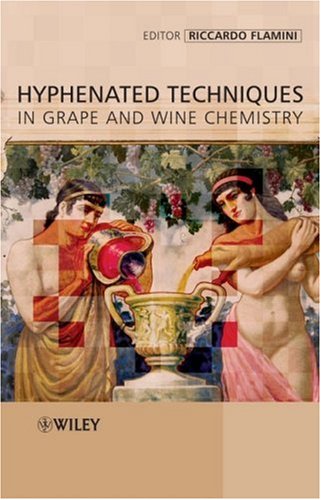

Most ebook files are in PDF format, so you can easily read them using various software such as Foxit Reader or directly on the Google Chrome browser.
Some ebook files are released by publishers in other formats such as .awz, .mobi, .epub, .fb2, etc. You may need to install specific software to read these formats on mobile/PC, such as Calibre.
Please read the tutorial at this link. https://ebooknice.com/page/post?id=faq
We offer FREE conversion to the popular formats you request; however, this may take some time. Therefore, right after payment, please email us, and we will try to provide the service as quickly as possible.
For some exceptional file formats or broken links (if any), please refrain from opening any disputes. Instead, email us first, and we will try to assist within a maximum of 6 hours.
EbookNice Team

Status:
Available4.7
36 reviewsThis book
presents the principal modern applications of hyphenated techniques used in the
analysis and study of grape, wine, and grape-derivative products chemistry.
Applications are performed by the use of techniques such as liquid- and
gas-phase chromatography (LC, GC) and capillary electrophoresis (CE) coupled
with spectrophotometric detectors (UV, DAD, FL), mass spectrometry (MS),
detectors for gas chromatography (FID, ECD), and inductively coupled
plasma-mass spectrometry (ICP-MS). These applications to oenology are described
with particular attention to methods developed by instrumentation usually
present in the laboratory, and with the better performances and reliability. Also,
principal applications of modern sample preparation methods, such as
solid-phase-extraction and solid-phase-microextraction (SPME, SPE) in the
oenology field, are described. At the end of each chapter the principal
literature on the topic, is reported.
A number of
methods are presented for a complete study of the high complex grape and wine
chemistry, by analysis of classes of compounds such as organic acids, sugars,
hydroxycinnamiltartaric acids, carbonyl compounds, proteins, resveratrol and
piceatannol, polyphenols such as
anthocyanins and derivatives, flavonols, flavanols and proanthocyanidins,
volatile compounds such as esters, alcohols, phenols, monoterpenes and sulphur
compounds, contaminants such as ochratoxin A (OTA), biogenic amines,
ethylphenols, chloroanisoles, pesticide residues, elements and inorganic
anions.